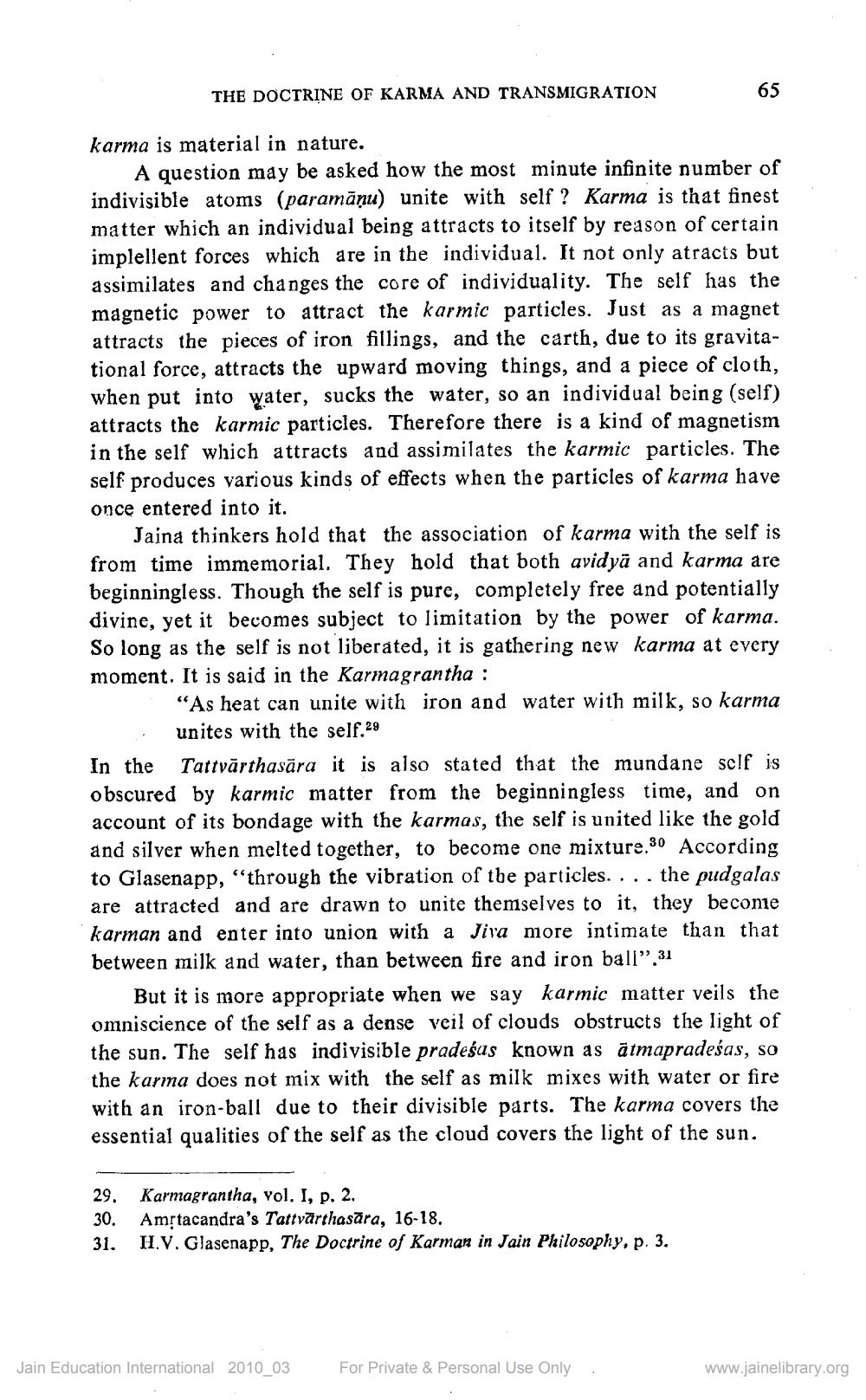________________
THE DOCTRINE OF KARMA AND TRANSMIGRATION
karma is material in nature.
A question may be asked how the most minute infinite number of indivisible atoms (paramāņu) unite with self? Karma is that finest matter which an individual being attracts to itself by reason of certain implellent forces which are in the individual. It not only atracts but assimilates and changes the core of individuality. The self has the magnetic power to attract the karmic particles. Just as a magnet attracts the pieces of iron fillings, and the carth, due to its gravitational force, attracts the upward moving things, and a piece of cloth, when put into water, sucks the water, so an individual being (self) attracts the karmic particles. Therefore there is a kind of magnetism in the self which attracts and assimilates the karmic particles. The self produces various kinds of effects when the particles of karma have once entered into it.
Jaina thinkers hold that the association of karma with the self is from time immemorial. They hold that both avidya and karma are beginningless. Though the self is pure, completely free and potentially divine, yet it becomes subject to limitation by the power of karma. So long as the self is not liberated, it is gathering new karma at every moment. It is said in the Karmagrantha:
"As heat can unite with iron and water with milk, so karma unites with the self.29
In the Tattvärthasara it is also stated that the mundane self is obscured by karmic matter from the beginningless time, and on account of its bondage with the karmas, the self is united like the gold and silver when melted together, to become one mixture.30 According to Glasenapp, "through the vibration of the particles.. the pudgalas are attracted and are drawn to unite themselves to it, they become karman and enter into union with a Jiva more intimate than that between milk and water, than between fire and iron ball" 31
65
But it is more appropriate when we say karmic matter veils the omniscience of the self as a dense veil of clouds obstructs the light of the sun. The self has indivisible pradeśas known as atmapradesas, so the karma does not mix with the self as milk mixes with water or fire with an iron-ball due to their divisible parts. The karma covers the essential qualities of the self as the cloud covers the light of the sun.
29. Karmagrantha, vol. I, p. 2.
30.
31.
Amṛtacandra's Tattvärthasara, 16-18.
H.V. Glasenapp, The Doctrine of Karman in Jain Philosophy, p. 3.
Jain Education International 2010_03
For Private & Personal Use Only
www.jainelibrary.org




